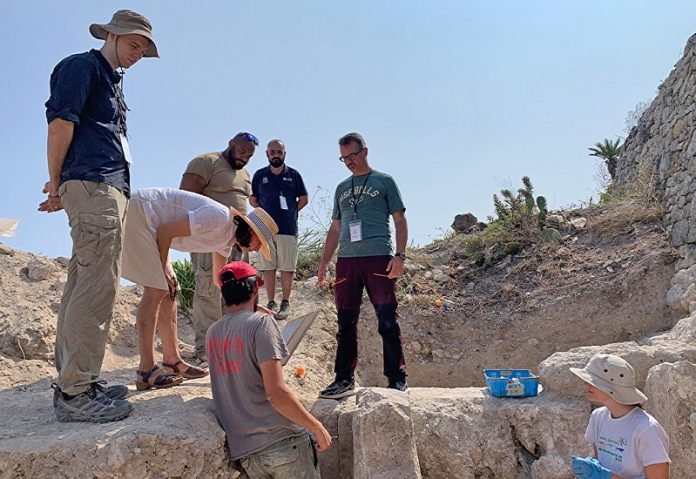
A group of scientists and students from the University of South Florida have made an exciting find in the country of Malta, located in the Mediterranean Sea.
They dug up an ancient house that’s been buried for hundreds of years and it’s in remarkably good shape!
The team, led by Professor Davide Tanasi from USF’s Institute for Digital Exploration (IDEx), is working on a project called the Melite Civitas Romana Project.
Along with other scientists from all over the world, they’re trying to learn about what life was like in Malta 2,000 years ago when the Romans were in charge.
Back then, Malta was a key location for the Roman military and a hub for sea trade.
According to Angela Costello, a USF student studying history and digital humanities, Malta is a treasure trove of ancient archaeology and history.
But surprisingly, not many studies have been done there.
This project is giving the team the chance to discover incredible Roman structures and to learn more about the ancient history of Malta using new digital techniques.
The team found a beautifully decorated mansion, called a Roman Domus, in the heart of the ancient city of Melite.
The house, which had been hidden under layers of soil for centuries, was used from the 1st century BCE to the 2nd century CE. Professor Tanasi thinks it was probably the home of someone important, like a representative of the emperor or a wealthy person close to the imperial court.
After spending a summer digging up and cleaning the artifacts from the Roman Domus, the team found a part of another house next to the Domus. This newly discovered house had walls nearly 10 feet tall, which is unusually tall for Roman houses in the Mediterranean area. Tanasi says this discovery helps us understand more about the layout of the ancient city of Melite and how people lived there.
The team is now trying to find out more about the owner of this second house and what life was like living next to the Domus. They’re looking for clues in the items they’ve found so far: fragments of terracotta floor tiles, pieces of frescoed plasters, and an ancient waste disposal system full of broken pottery, glass vessels, animal bones and charcoal.
This garbage can tell us a lot about the people who lived in the house. Sarah Hassam, a USF student studying ancient history, found an exciting clue in a small fragment of pottery. She noticed that it had the letters D-A-O-I engraved on it. This could be part of someone’s name.
The IDEx team is also using digital technology to preserve the cultural heritage they’ve found. They’re using photographs and laser scanning to create detailed 3D models of the site. These models will help them analyze the site even when they’re not physically there.
The team will continue their work next summer to learn more about the newly discovered house and its owner. This fascinating discovery shows us that sometimes, we can learn a lot about the past by digging in the dirt!
Follow us on Twitter for more articles about this topic.



